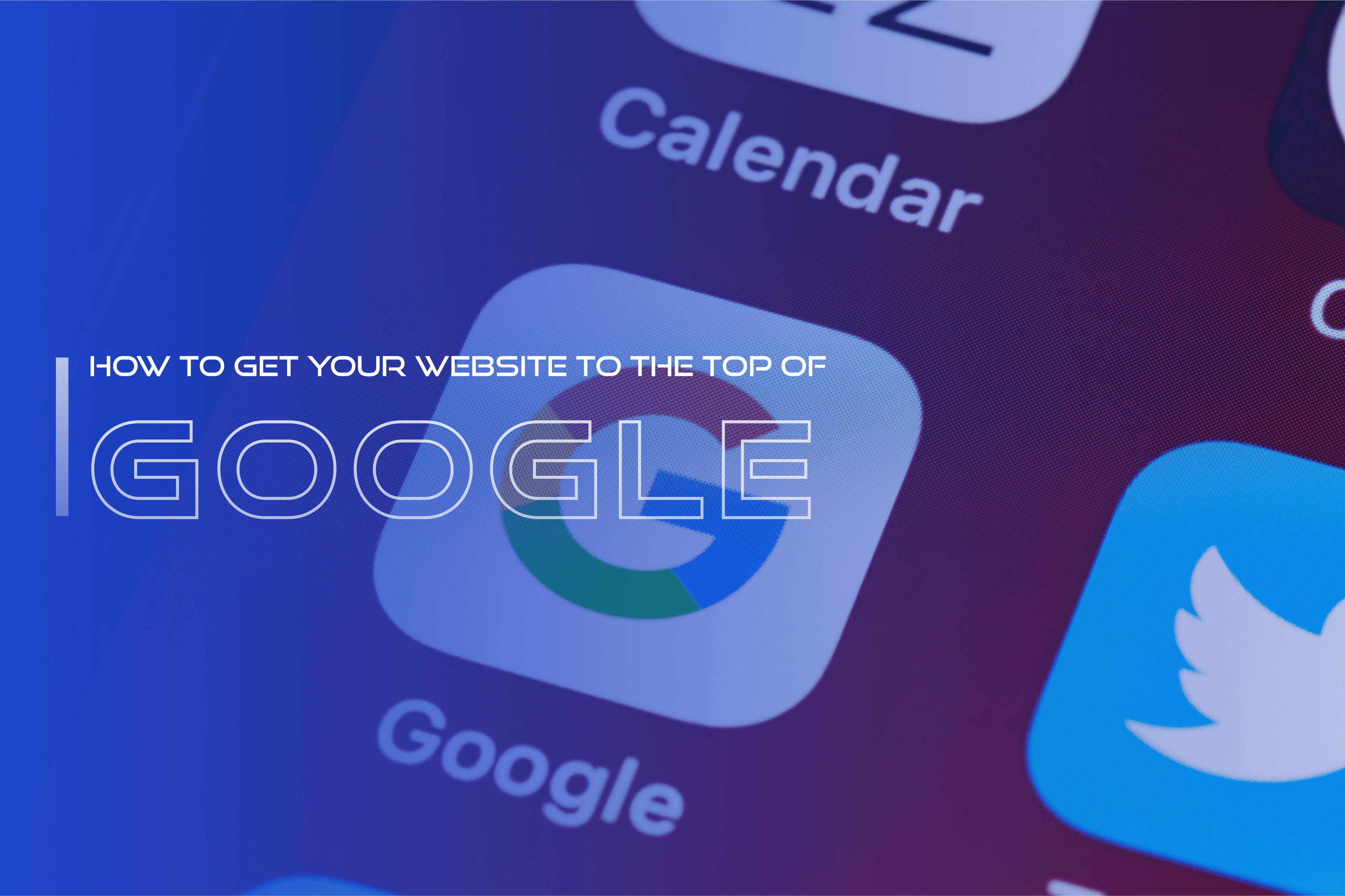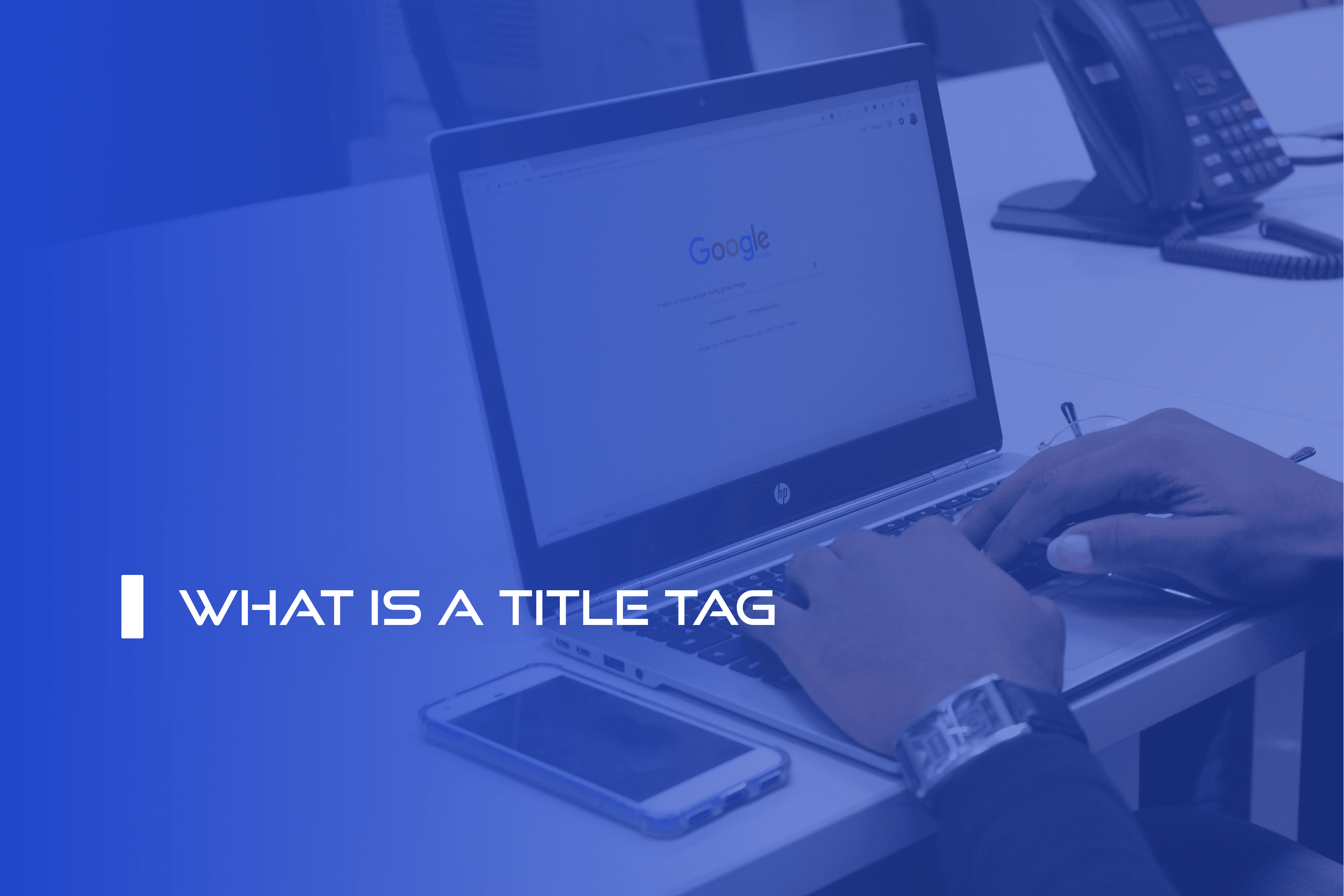
The meta title tag is an HTML element, which means the actual title of the page and in 99% of cases is used in search engine results. This tag is considered extremely important in the SEO optimization of the site and is used to attract the attention of users of any online site.
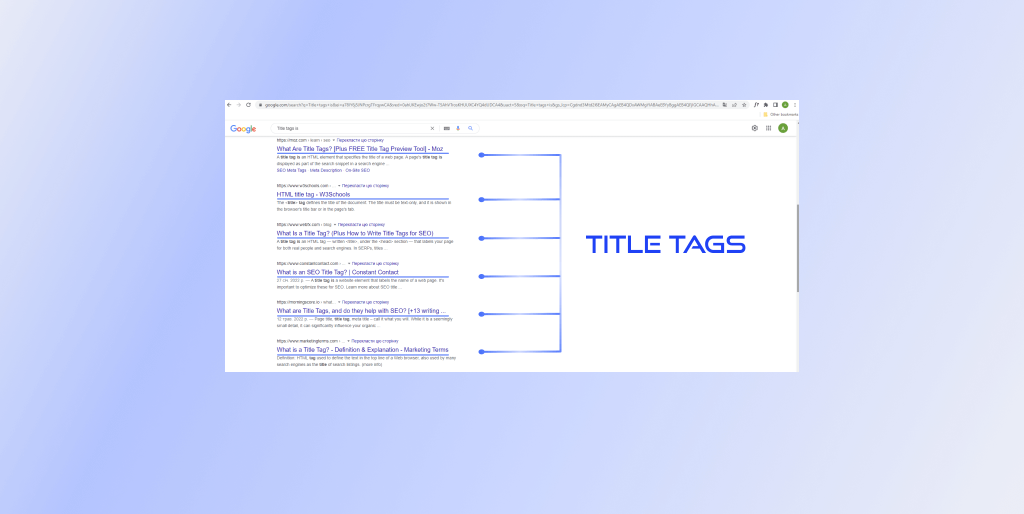
HTML meta tag is needed to specify the content of the page to the search engine. Text that is framed by <title> </title> tags is displayed by the browser in the window title. In addition, this text will also contain a link to your site on the search engine results page that is, in some way, a business card of your resource.
So, how does one understand the meaning of title and tags for SEO? If you are new to these definitions and terms, don’t worry! We’ve covered the most important points about what a title is and how to use it in this article.
Why are Title Tags Important?
If you started learning about SEO and you keep asking yourself “what is a tag to a search engine” here’s the answer. The main purpose of the title tag is to provide a short, precise, and concise description of the content of a web page. The title is a large blue link to the site, and in browser tabs, it is the literal name of the page.
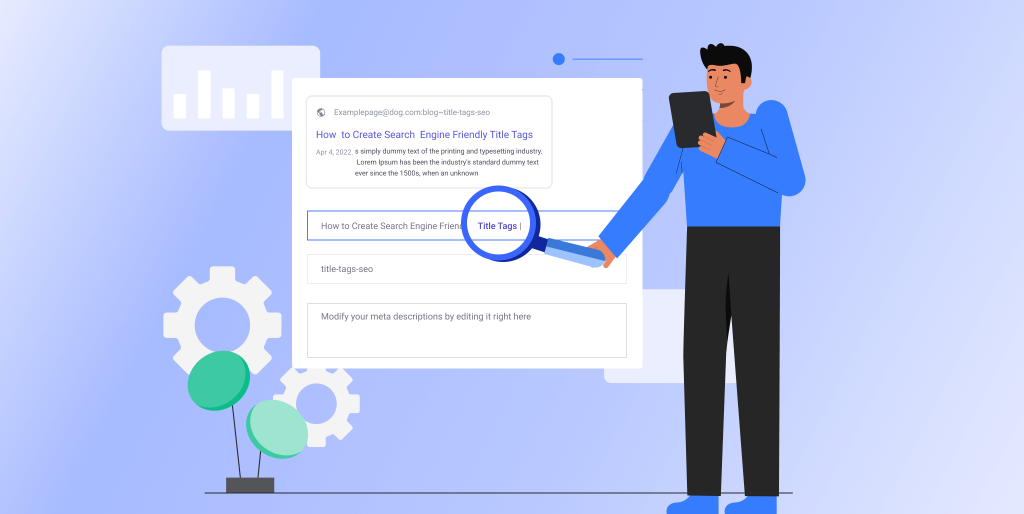
This element is important not only for users (who decide based on the title whether they should visit this page) but also for search engines (here the title plays one of the decisive roles in terms of determining the relevance of the page to the user’s search query).
The title is the first thing a person sees in search results, on a browser tab, and when reposting a link to a page on social networks. It depends on its content whether the user opens the link or leaves it unattended.
Recently, Google introduced new recommendations for compiling title and description tags for website promotion. If earlier it was possible to use template tags on similar pages, now Google is focusing on uniqueness, relevance, and strict compliance with the content of the page.
The more accurately the title tag describes the content of the page, the better it will be perceived by Google search bots. The content is the main priority. It is important to remember that if the search bot fails to index this or that page of the site, then Google can replace its title with information from other sources, which means that such a page runs the risk of not appearing in the search results. Therefore, a webmaster should remember to carefully compose the robots.txt file and close pages that do not need to be indexed using the noindex directive.
Setting up meta tags correctly is vital for your website’s SEO. Sometimes even the smallest changes in meta tags are enough for a site to reach the TOP10. This is especially true for low-frequency queries, as well as in cases where the site is already high enough for this query, for example, it has the 11-15th position in the search results. And it takes very little to push it to the TOP.
Title tags in SERPs
The meta title tag helps in promotion and forms the interest of visitors. If you use key queries in the title and correctly optimize articles, the tag will be displayed in the search engine results after the user enters the key query. And if the headline also attracts attention, the visitor is more likely to open the page.
Title tags in web browsers
In the browser, the page title is displayed in a tab. As a rule, the HTML title tag is shown at the top of the tab, near the website name. If the site is saved, it is also displayed in bookmarks and “Favorites” on the browser’s home page.
If the users have many tabs open, they can quickly find the one they need by the meta tag. Moreover, the more tabs are open, the smaller part of the tag is displayed. This is not only true for smartphones, since their browser tabs are arranged vertically.
Title tags on social networks
In social networks, you can see meta tags in those posts that contain links to external pages. For example, in the repost of an article from a site. To open this article, the user clicks on the title.
Some social networks, such as Facebook and Twitter, have their own tags. The author of the article can specify an additional title intended for reposts.
How to Write Title Tags for SEO
If the page of your website is the one that is relevant to the query of the user, and the site is optimized for SEO, an effective title will be another detail that will help you attract new customers.
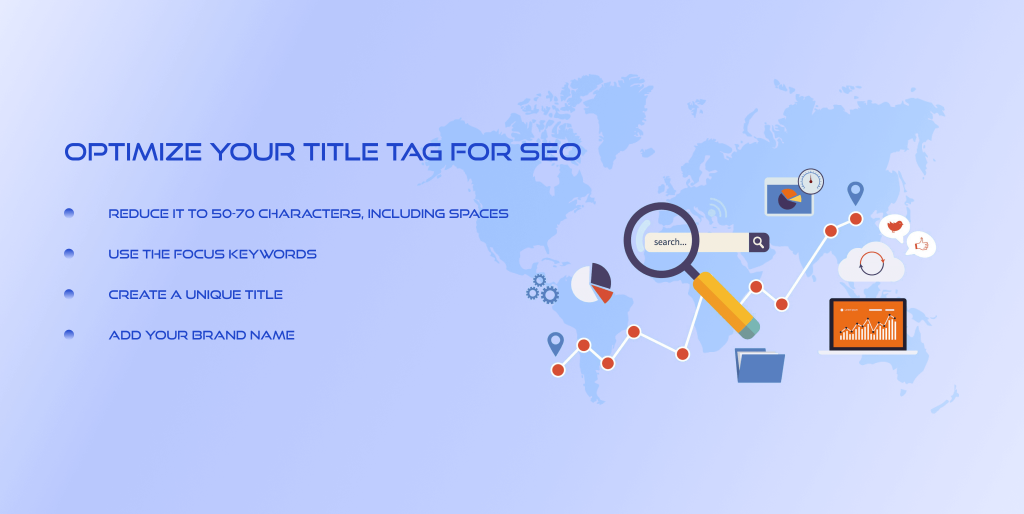
Let’s consider what are the most important points about how to write title tags for SEO promotion. You should pay attention to some things creating a page meta title.
How long should title tags be
The optimal length is 50-70 characters, including spaces. The longer text simply won’t show up in search results. Google will evaluate the content of the tag but will also cut it short when displaying search results.
Therefore, before writing a long title, think about what the user will see after the search engines “squeeze” it into their frames. Will the text be attractive to the reader? Will the necessary keywords remain in it?
Use the focus keywords
Include the primary keywords in the meta tag text. Add other keys as far as possible. Since search engines can truncate the text, enter the main query at the very beginning of the meta tag to make sure it stays in the title of the page.
Unique title
The title meta tag should be different from the H1 title and other content on the page. It must also be unique relative to other texts on the Internet. Copying it on a competitor’s site is definitely a bad idea. Google will react negatively to such tricks.
The content of the tags should be understandable not only to you but also to a wide range of users. Of course, there are categories of goods that professionals are looking for, but you should also think about beginners, non-core specialists who may be interested in this type of product or service.
Use your brand name
If your brand is well-known in your target market, then in such cases, it needs to be placed in the visible area of the title so that users pay attention to it in the search results. In other cases, you should add the brand name to the end of the title tag.
Why Google Doesn’t See My Title Tag
Google independently forms the title and description if it considers the meta tags written on the site to be of poor quality. Therefore, first of all, it is worth checking whether your meta tags meet the requirements of the search engine.
All these mistakes can lead to the fact that search engines consider your title irrelevant and indicate their automatically generated text in the snippet.
Your title is keyword-stuffed
Remember, meta tags could be made up of a rambling list of keys. Today, neither search engines nor users will appreciate the tag that consists of keywords only. Therefore, when compiling a title for a page, try to make it literate and easy to read. In fact, it should be a regular title that displays the essence of the material by reference and contains the necessary keys.
Your title isn’t relevant to user’s query
When creating snippets, Google very often uses the main text from the page, especially its introductory part. Therefore, when you write texts, take into account that part of the text from the first paragraphs of the text may fall into the snippet.
Overall Tips for Writing a Good Title Tag
Here are our basic recommendations for compiling the title for any site. Feel free to use it as your cheat sheet.
- Headings should be informative and concise; each page must have a unique title;
- The title should consist of the main high-frequency query and qualifying words;
- The header should not use an excessive number of keys;
- The title must match the actual content of the page;
- The title should be readable and have the structure of a complete sentence;
- The title must be free of typos and grammar errors.
Summing It Up
So, the title meta tag is of great importance in SEO website promotion. For its correct influence, it is necessary to take into account the main queries and structure of the site, as well as the general requirements of search engines.
Using well-constructed and unique titles for all pages of your site will help you rank higher in the search engines. The title meta tag is needed for both SEO promotion of the site and for the visitor who is simply looking for the information they need.
Therefore, it is worth paying maximum attention to this tag, making the title attractive to the visitor and optimized for the main key request for which a particular page is being promoted.







